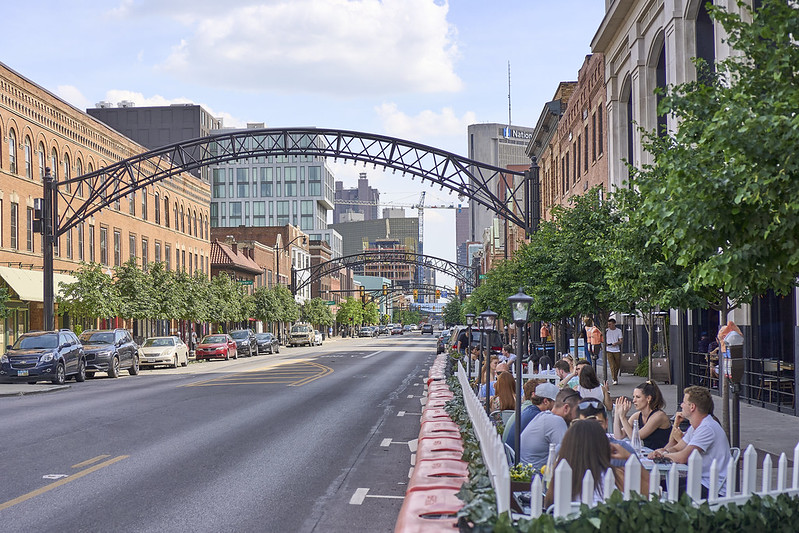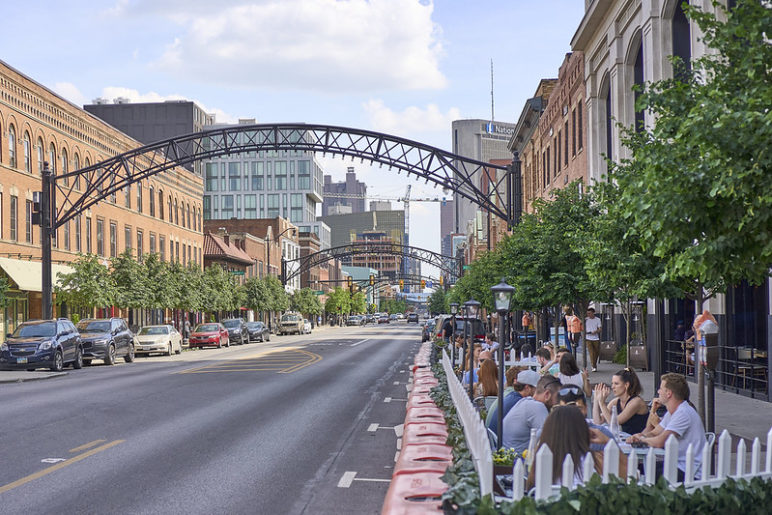Editor’s note: The following is an excerpt from an article originally commissioned and published by the Lincoln Institute of Land Policy. View the original article in full, and learn more about the Lincoln Institute.
Columbus, Ohio, invented the first known off-street parking requirement for an apartment building in 1923. After nearly a hundred years, the results are in, and they’re not good.
Last year, an assessment of the local zoning code—commissioned by the city as part of a comprehensive code revision process—concluded that off-street parking requirements were “not effective” and “often poorly matched to true parking demand.”
That mismatch has gotten worse over time. Today’s parking requirements in Columbus are far higher than their cousins from the city’s midcentury zoning code. In 1954, an apartment building with 100 one-bedroom units was required to have 100 parking spaces; today it has to have 150. For a 2,500-square-foot restaurant, nine required parking spaces became 34, in the 90 percent of the city not covered by special overlay districts. These ratios are out of step with the local market, leading builders to request parking reductions more than any other type of zoning variance. City and regional plans have recommended reducing parking requirements and making them more consistent.
Columbus is not alone. Across the United States, decades of similar parking requirements have led to a glut: researchers estimate that for every car in the country, there are at least three parking spaces—and some have suggested the number is closer to eight spaces.
This oversupply has created a host of problems: parking requirements can inflate housing costs, block buildings from being adapted to new uses, and contribute to sprawl, making additional driving (and parking) necessary. They create an administrative burden. And the impervious surfaces of parking lots increase the risk of flooding and contribute to the urban heat island effect.
But there is good news: of all the harms traditional zoning has inflicted on communities, parking requirements are the easiest to fix, said Sara Bronin, former chair of the Hartford, Connecticut, Planning and Zoning Commission. Bronin was at the helm in 2017, when Hartford became one of the first cities in the United States to eliminate residential and commercial parking mandates. The year before, city leaders had tested the waters by eliminating requirements in the downtown area, a move that yielded new development projects and new proposals for reuse. “Every community should be eliminating their parking requirements,” Bronin said.
Each year, more cities are eliminating or reducing such mandates. In 2021, cities from Minneapolis to Jackson, Tennessee, eliminated minimum parking requirements from their zoning codes. In the week that this article was drafted alone, cities from Spokane to Chicago to Burlington, Vermont, rolled back parking mandates.
Communities might reduce their parking requirements because they are trying to reinvent themselves by attracting new businesses and development, accommodate population growth with space-efficient infill, or focus more on transit and walkability. Regardless of the reason, parking reform advocates say this land use regulation could finally be on its way out.
“We’re going to look back at this as just this weird, late-20th century aberration,” predicts Patrick Siegman, an economist and planner who has been studying parking since 1992, including as a partner at the national transportation planning firm Nelson Nygaard. “We created something wildly inefficient.”
The above is an excerpt from an article originally commissioned and published by the Lincoln Institute of Land Policy. View the original article in full, and learn more about the Lincoln Institute.










